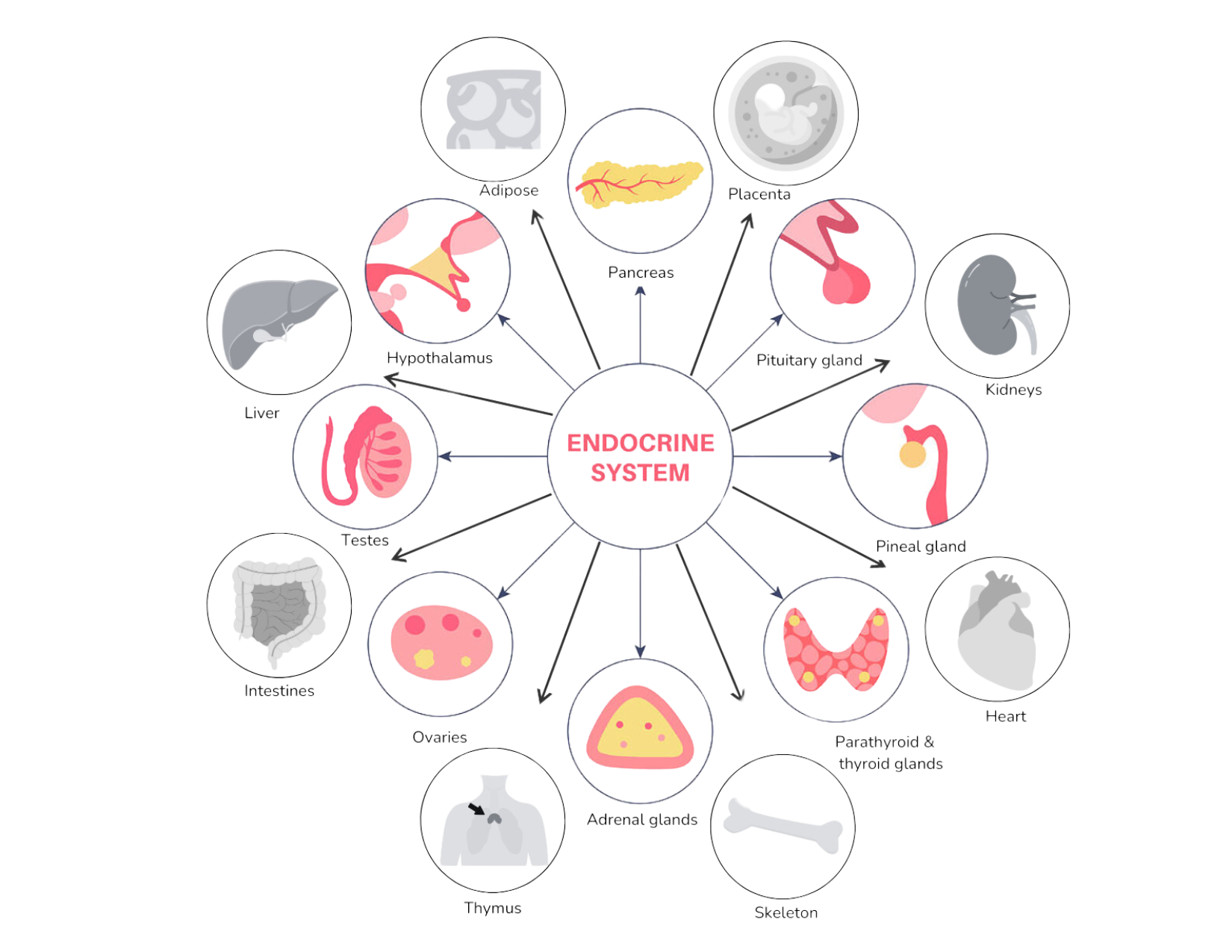The Endocrine System: The Body’s MESSENGER System
I’m glad you’re enjoying the “Tour of the Body” series. We continue from digestion into our endocrine system, aka our hormonal system—a complex network that manages our bodies’ functions.
What is the Endocrine System?
Just like firmware ensures that the hardware operates correctly, the endocrine system ensures that the body's various systems are functioning harmoniously. It’s fundamental and works continuously in the background to maintain balance and respond to the body’s needs.
The endocrine system is comprised of (mostly) glands. Endocrine glands are responsible for making and releasing hormones into the bloodstream. Hormones are chemical messengers that coordinate how your body functions day in and day out. They tell your body what to do, or what not to do. We have over 50 (discovered) hormones, but don’t worry, we won’t try to cover all of them.
Tiny Signals, Big Impacts
Our hormones are responsible for our metabolism, stress & mood regulation, blood sugar (as you learned about with the pancreas), reproduction, growth and structure, as well as our sleep-wake cycles. It’s amazing how a few little molecules can have such big impacts on the entire body. Think of your hormones a bit like Goldilocks, everything needs to be juuuust right. They’re also a bit like Dominos, causing chemical and systemic cascades.
Receptors & Hormone: Lock & Key
Hormones also need receptors, just like locks need keys (or emails need inboxes). Hormones are specific and bind with specific receptors. If we either have too few hormones or too few receptors, messages can’t be received.
Who Talks to Whom?
Communication either happens between one gland and another (think of this like an inter-department memo) for instance from the pituitary gland to the thyroid gland (more on this soon). Or, communication happens between a gland and a target organ, like when the pancreas releases glucagon and the liver starts converting glycogen to glucose.
Who are the Players?
As you can see in the graphic below, the endocrine system seems to make up most of the major organs. However, I grayed some out (the heart, intestines, liver, kidneys, placenta, thymus, skeleton, and adipose/fat tissue), because while these organs release hormones of their own, and are technically part of the endocrine system, they aren’t what we think of as “the classics.” The classics include: the pancreas, hypothalamus, pituitary, pineal, thyroid and parathyroid, adrenals, ovaries, and testes.
Over the next few weeks, we’re going to talk about each of these classics (and hopefully highlight the others too): where they are, what hormones they release, and how these hormones impact our lives. Here’s the slate so far, with potential for changes as we go:



